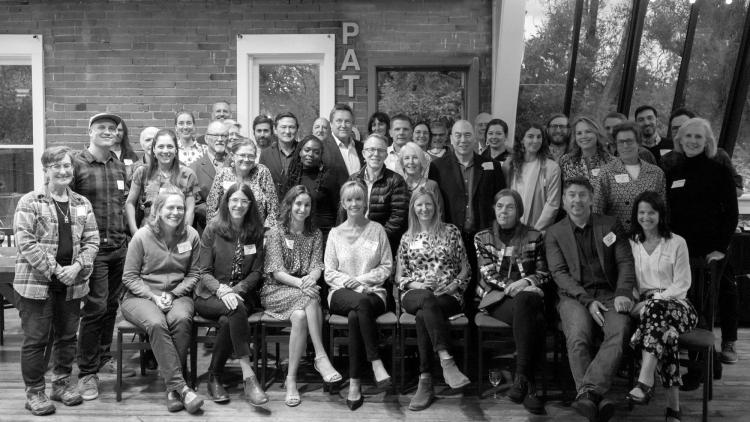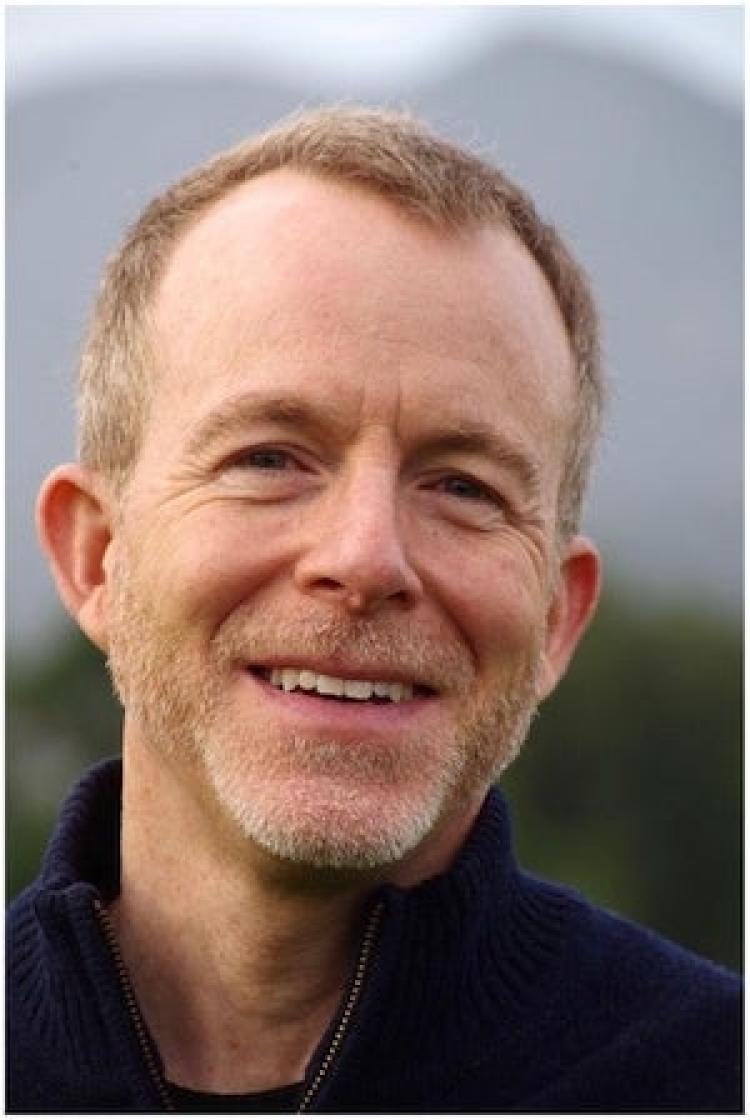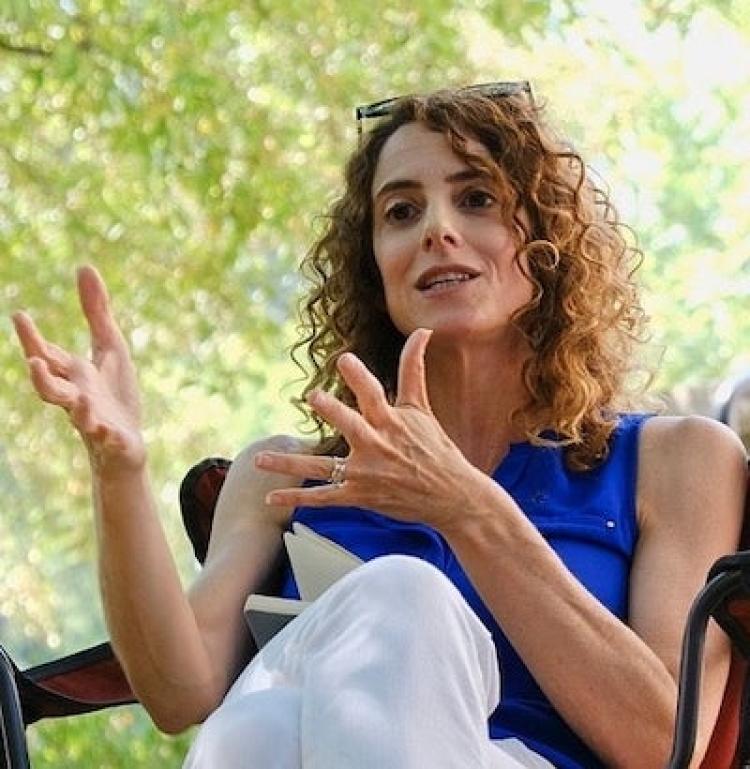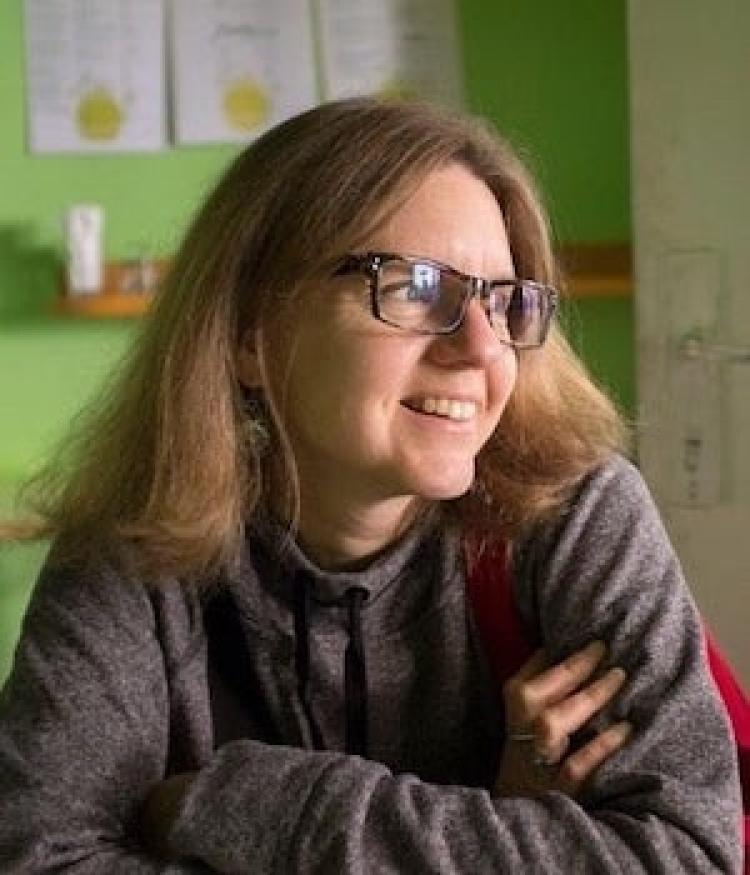Celebrating 25 years of the Scripps Fellowships in Environmental Journalism

A banner reading “Cheers to 25 Years” adorns the doorway to The Riverside in Boulder. It is a simplification of what the Center for Environmental Journalism (CEJ) staff would like to write, but due to the limited number of letters in the decoration pack, it will suffice.
“Cheers to 130 fellows” would be a good place to start. “Cheers to hundreds of field trips,” or maybe “Cheers to lasting friendships” could be other options. “Cheers to books being published, careers changing, news outlets being opened, documentaries being made, and numerous awards being won,” to name a few of our other top choices. With enough letters in a decoration pack, the CEJ could decorate the whole building with praise for the Ted Scripps Fellowships and its fellows.
For the past 25 and a half years, the Center for Environmental Journalism has been offering an opportunity for working journalists to take a break from the everyday grind of journalism to spend time studying, growing, and most importantly, making connections that have the potential to change the course of their careers.
The Ted Scripps Fellowships in Environmental Journalism were originally founded in 1993 at the University of Michigan but moved to the University of Colorado at the start of the 1997-1998 academic year, under the direction of Len Ackland, who had founded the Center for Environmental Journalism just five years earlier. Named after the late Edward (Ted) Scripps, grandson of E.W. Scripps, the program is dedicated to continuing his legacy as a journalist who cared deeply about the environment.

David Baron, a 1998-1999 Ted Scripps Fellow and Advisory Board Chair, reminisced about his time as a fellow. “I had a really good group. We were really close,” Baron said. “We went out to eat often and had potluck dinners.” Coming together around meals seemed to be a common thread among former and current fellows alike.
Connections made around the dinner table weren’t the only ones Baron remembers from the fellowship. “I came to realize that covering the environment was about so much more than science,” he said. “During my year as a Scripps Fellow, I got a much greater appreciation for the connections between environmental science and all aspects of society.”
One of these connections was the impact of law on the environment. During his fellowship, Baron met Charles Wilkinson, a beloved board member for the fellowship, law professor at CU, lawyer, and author. Baron still has a thick three-ring binder filled with readings and notes he wrote down when he took Wilkinson’s Foundations of Natural Resource Law class during his fellowship 25 years ago. “I wanted to learn how to discuss environmental issues as much more than just having to do with science, and that was a big part of what I learned in Charles' course.”
During his fellowship, Baron drafted the proposal for his first book, The Beast in the Garden, after previously working as a correspondent for NPR. He has since written one additional book and is currently working on his third.
Stacy Feldman, a 2020-2021 Ted Scripps Fellow, came to Boulder for the fellowship and was inspired by the need for hyper local climate and environmental journalism within the community as well as other related issues: housing, transportation, land-use and development, and more. Even though she didn’t propose a local news outlet for her fellowship project, the pieces fell into place. “There was just so much encouragement, and I was allowed to use that year to lay the foundation. The directors allowed me to dream, and they dreamed along with me.”
Feldman launched the Boulder Reporting Lab in late 2021, and it has already become a reputable news source within the community. Since leaving the fellowship, Feldman has stayed 
Today's journalists wear many hats; print, audio, broadcast, documentary… Most outlets look for journalists who can do it all. Karen Coates, a 2010-2011 fellow who is currently a CEJ Ambassador, is the embodiment of this expectation. Her career started in print journalism and has since taken her into broadcast and documentary filmmaking. She currently oversees a fellowship with the global environmental news outlet Mongabay, and she recently made a documentary film with her husband Jerry Redfern (2012-2013 fellow) about unexploded ordnance in Laos, decades after history's largest bombing campaign.
For Coates, CU Boulder was, and still is, an incredibly important tool in her belt. “The vast amounts of research available at the university have been instrumental to my career as a reporter both then and now,” she said.

These are just three of 130 fellows, and each fellow adds to the legacy of the Scripps family and their stewardship of environmental journalism. Throughout the years, the network of journalists, CU professors, graduate students, local experts, CEJ leadership and staff, and the fellowship advisory board have comprised an invaluable branch of this legacy which will have a lasting impact for decades to come.
Cheers to 25 years, and cheers to many, many more.

